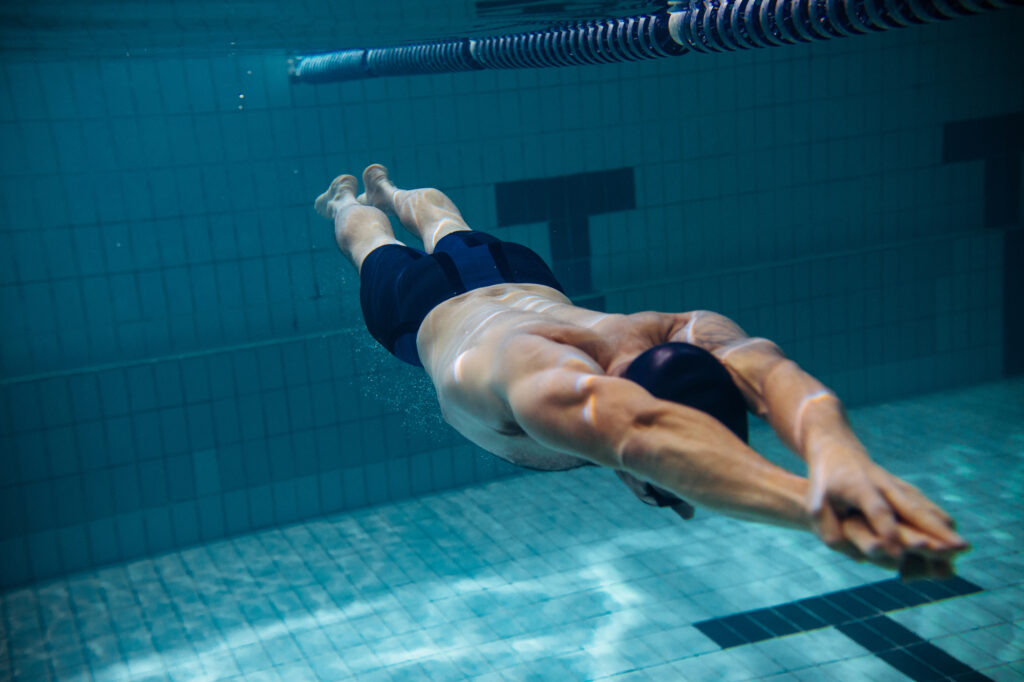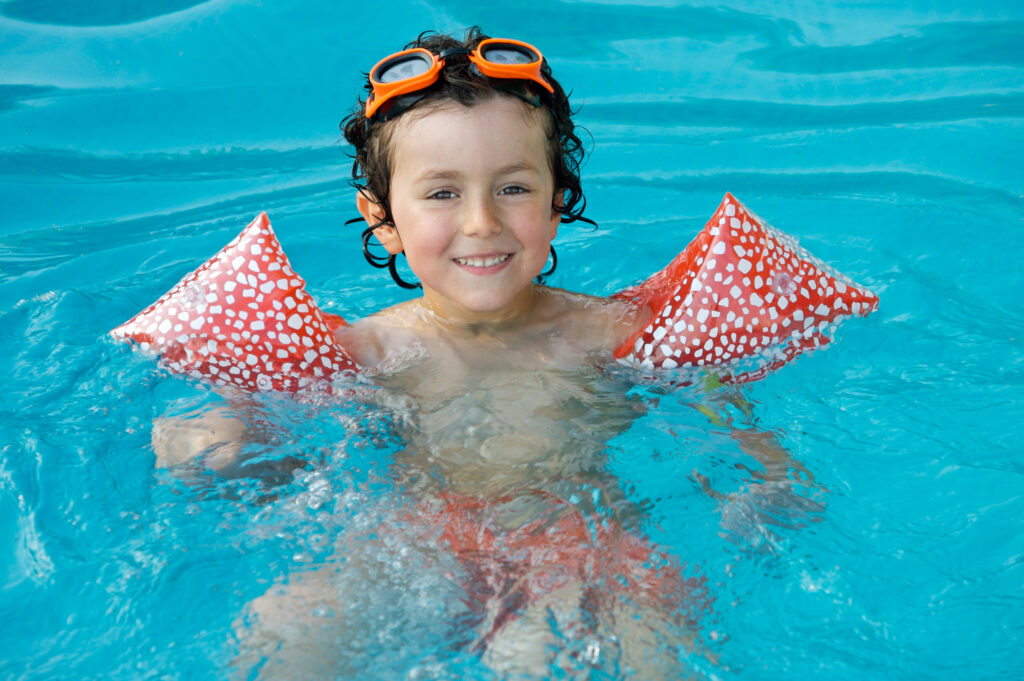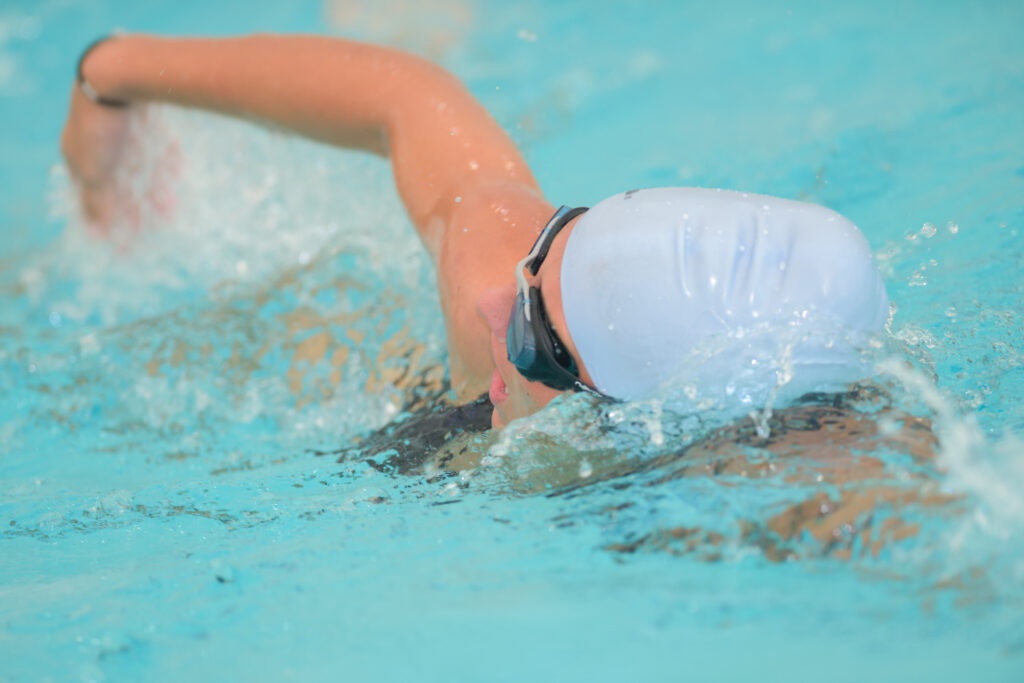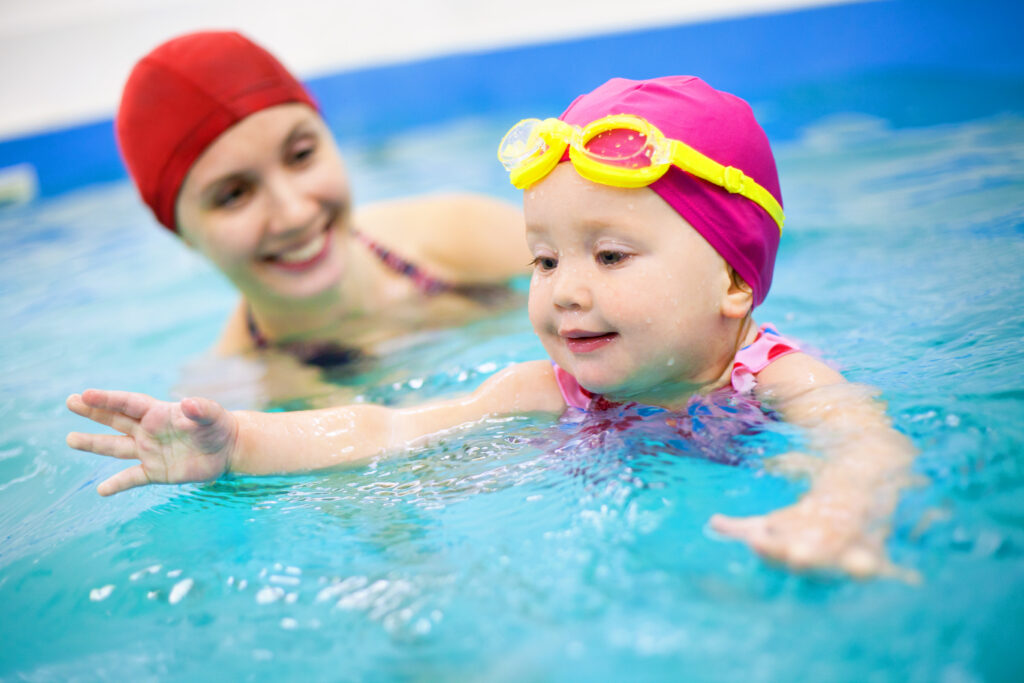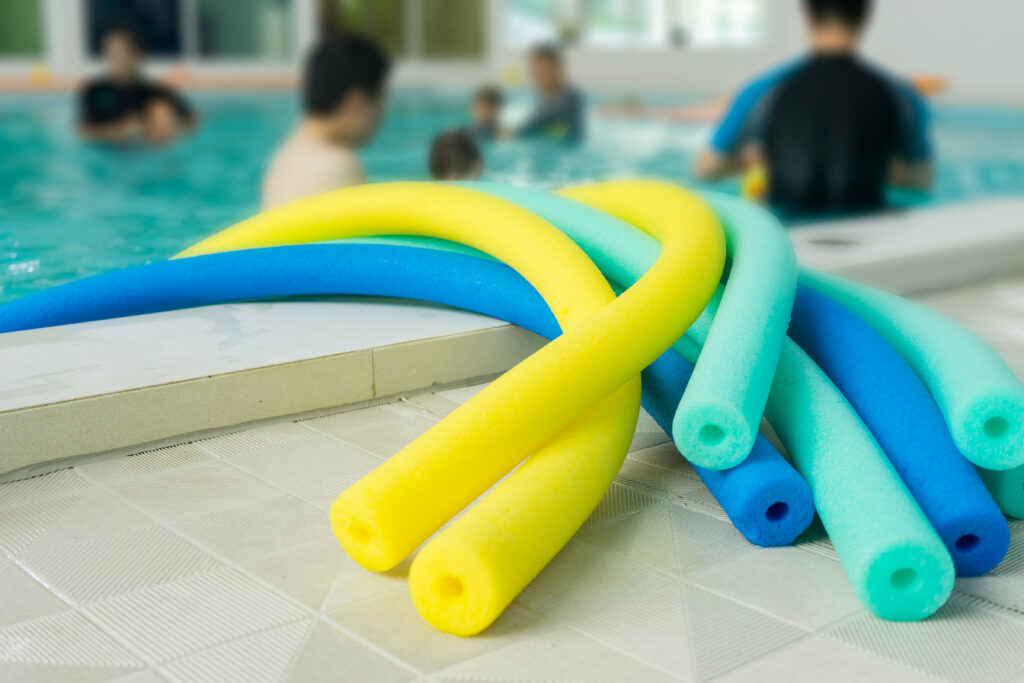Swimming provides a gentle yet effective way to heal muscle injuries. When you’re in the water, the buoyancy helps support your body weight, minimising impact on joints and creating an ideal environment for recovery. Swimming is highly beneficial for muscle recovery because it allows for active movement without putting stress on injured areas.
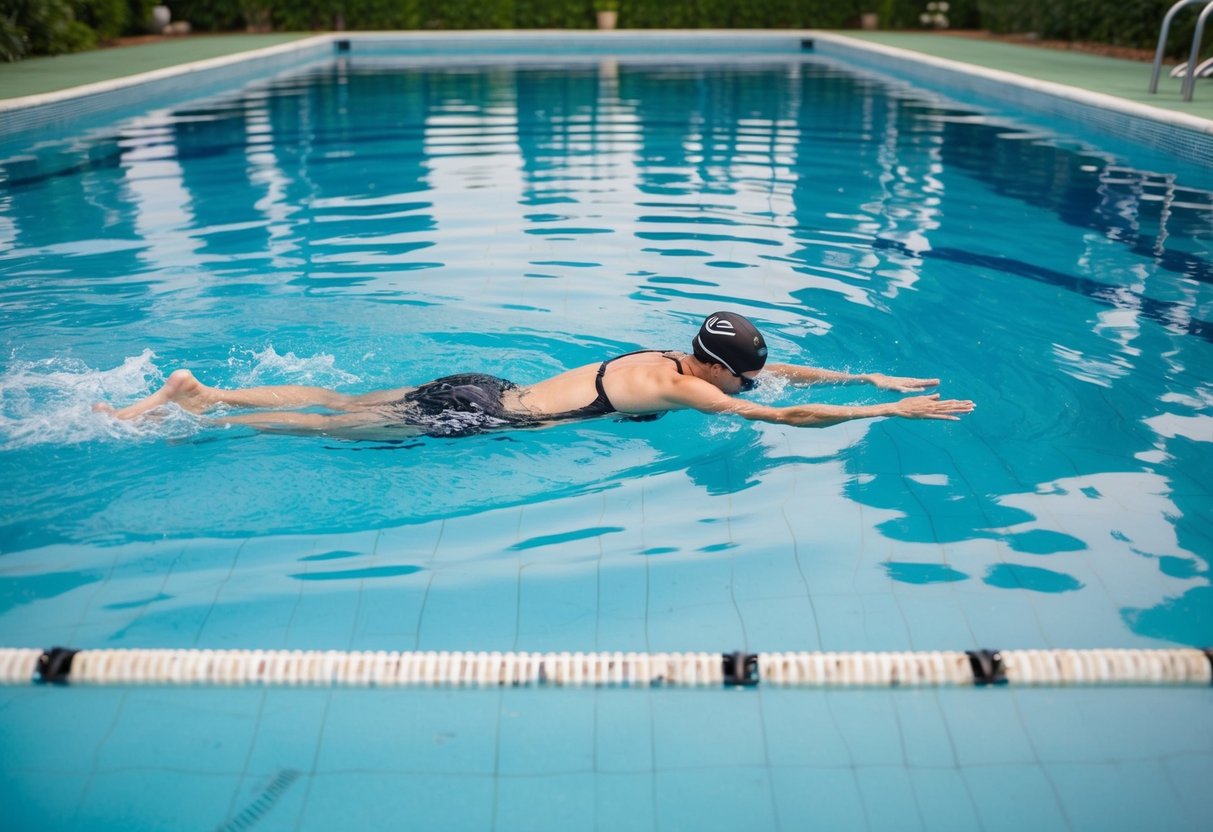
After an injury, muscles often become tight and stiff. Regular swimming helps keep the muscles loose and flexible through gentle, controlled movements. Alternating different strokes can target various muscle groups whilst maintaining good blood flow to injured areas, which speeds up the healing process.
Research supports swimming as a recovery tool. Studies published in medical journals have found that incorporating swimming into recovery routines helps athletes bounce back faster from intense training. The water’s natural resistance provides enough challenge to maintain fitness whilst the low-impact nature makes it suitable for people with musculoskeletal conditions.
The Role of Swimming in Muscle Injury Recovery

Swimming offers a unique environment for muscle injury recovery by combining gentle resistance with reduced impact. The water’s supportive properties create an ideal setting for rehabilitation while still providing effective exercise.
Benefits of Swimming for Recovery
Swimming provides exceptional advantages for those recovering from muscle injuries. The activity strengthens muscles surrounding injured areas, which helps speed up the healing process. This gentle strengthening occurs without placing excessive stress on damaged tissues.
Water exercises allow individuals to maintain fitness levels during recovery periods when land-based exercises might be too painful. The consistent, rhythmic movements in swimming help restore flexibility and range of motion naturally.
Swimming also boosts blood flow to sore muscles, delivering nutrients essential for repair while removing waste products that contribute to soreness. This improved circulation can significantly reduce recovery time.
For those concerned about losing conditioning during injury recovery, swimming maintains cardiovascular fitness without aggravating injuries.
Understanding Buoyancy and Resistance in Water
Water’s buoyancy creates a supportive environment where body weight is reduced, decreasing pressure on injured joints and muscles. This weight reduction can be as much as 90% when submerged to neck level.
The natural resistance of water creates a gentle, multi-directional resistance that strengthens muscles evenly. Unlike weight training, water resistance adjusts automatically to the force applied, reducing the risk of overexertion.
Temperature-controlled pools offer additional benefits. Warm water relaxes tight muscles and increases blood flow, while cooler water can reduce inflammation in recently injured tissues.
For rehabilitation purposes, water depth can be adjusted to progressively increase weight-bearing as recovery advances. This gradual progression helps rebuild strength safely.
Impact of Swimming on Heart Rate and Blood Pressure
Swimming creates a unique cardiovascular response that benefits recovery. The horizontal body position and water pressure assist blood return to the heart, improving circulation without straining the cardiovascular system.
Regular swimming sessions have been shown to reduce markers of muscle inflammation, specifically C-reactive protein levels. This reduction helps decrease pain and accelerates the healing process.
The rhythmic nature of swimming creates a natural breathing pattern that can lower heart rate and blood pressure. This calming effect reduces stress hormones that might otherwise slow healing.
Swimming engages multiple muscle groups simultaneously, creating a balanced workout that improves coordination while avoiding compensatory movements that could lead to secondary injuries.
For long-term recovery, swimming builds endurance through aerobic conditioning without the impact stress of running or jumping activities.
Complementary Recovery Techniques to Swimming
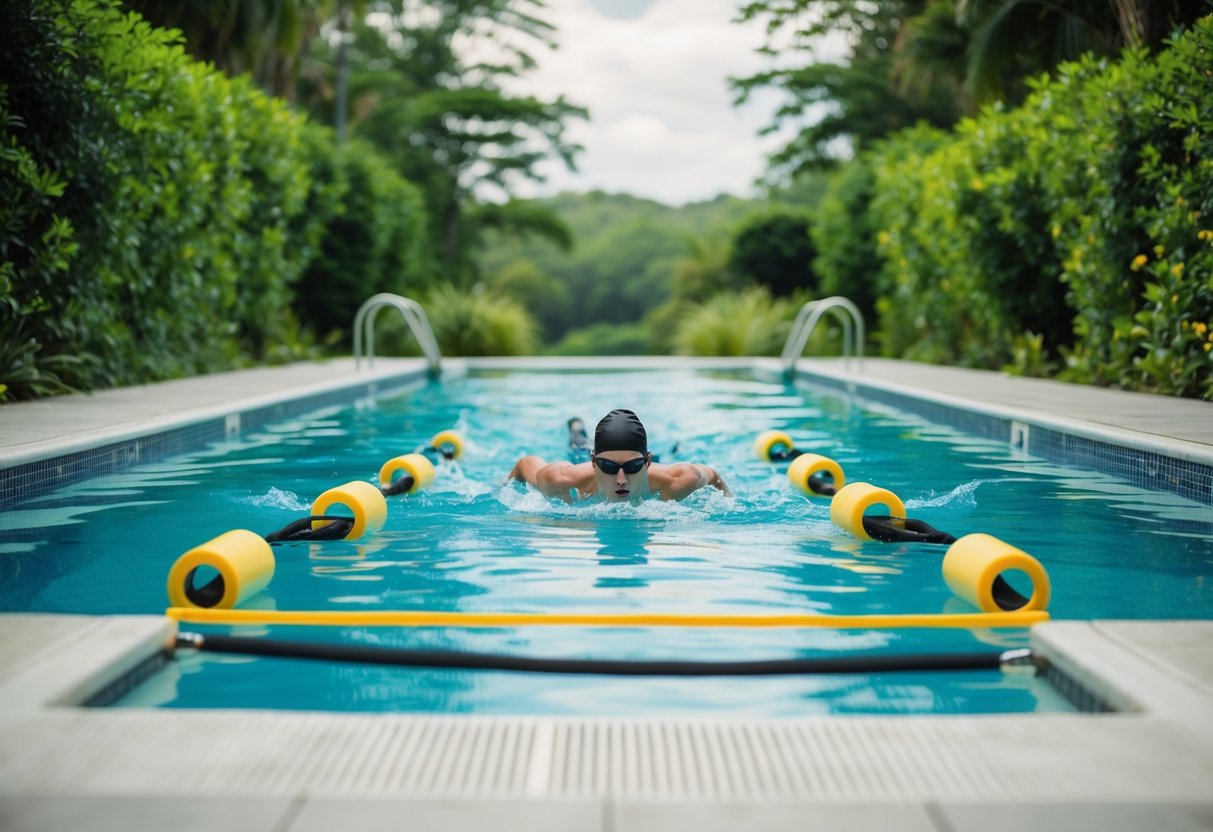
While swimming offers excellent benefits for muscle recovery, combining it with other therapies can create a more comprehensive healing approach. These methods work together to address different aspects of recovery and rehabilitation.
Yoga and Stretching for Muscle Flexibility
Yoga serves as an ideal companion to swimming for muscle recovery. It focuses on enhancing flexibility while also improving coordination and balance. Unlike swimming’s rhythmic movements, yoga holds poses that gently stretch injured muscles in different ways.
Key benefits include:
- Increased blood flow to healing tissues
- Improved range of motion
- Enhanced mind-body connection
- Reduced muscle tension
For best results, swimmers should prioritise gentle stretches that target swimming-specific muscle groups. Poses like Child’s Pose, Downward Dog and Cat-Cow can release tension in the shoulders and back.
It’s essential to listen to your body during stretching sessions. Pain signals indicate a need to ease off, while mild tension suggests effective stretching. Consistent practice, even just 10-15 minutes after swimming, can significantly improve recovery times.
Massage Therapy for Enhanced Muscle Recovery
Massage therapy works brilliantly alongside swimming to speed healing and reduce discomfort. It directly addresses muscle inflammation by breaking up adhesions and increasing circulation to damaged tissues.
Popular massage techniques for swimmers include:
| Technique | Benefits | Best Timing |
|---|---|---|
| Swedish | General relaxation, improved circulation | Any time |
| Deep tissue | Targets chronic tension, breaks up scar tissue | 24+ hours after exercise |
| Sports massage | Performance-focused, addresses specific issues | Pre/post training |
| Self-massage tools | Convenient daily maintenance | As needed |
Cupping therapy has gained popularity with swimmers specifically, as it draws blood to targeted areas to speed healing.
For optimal results, massage should be used strategically—gentle techniques immediately after swimming for relaxation, with deeper work saved for rest days when muscles can fully benefit from the increased blood flow.
Designing a Recovery Plan with Swimming
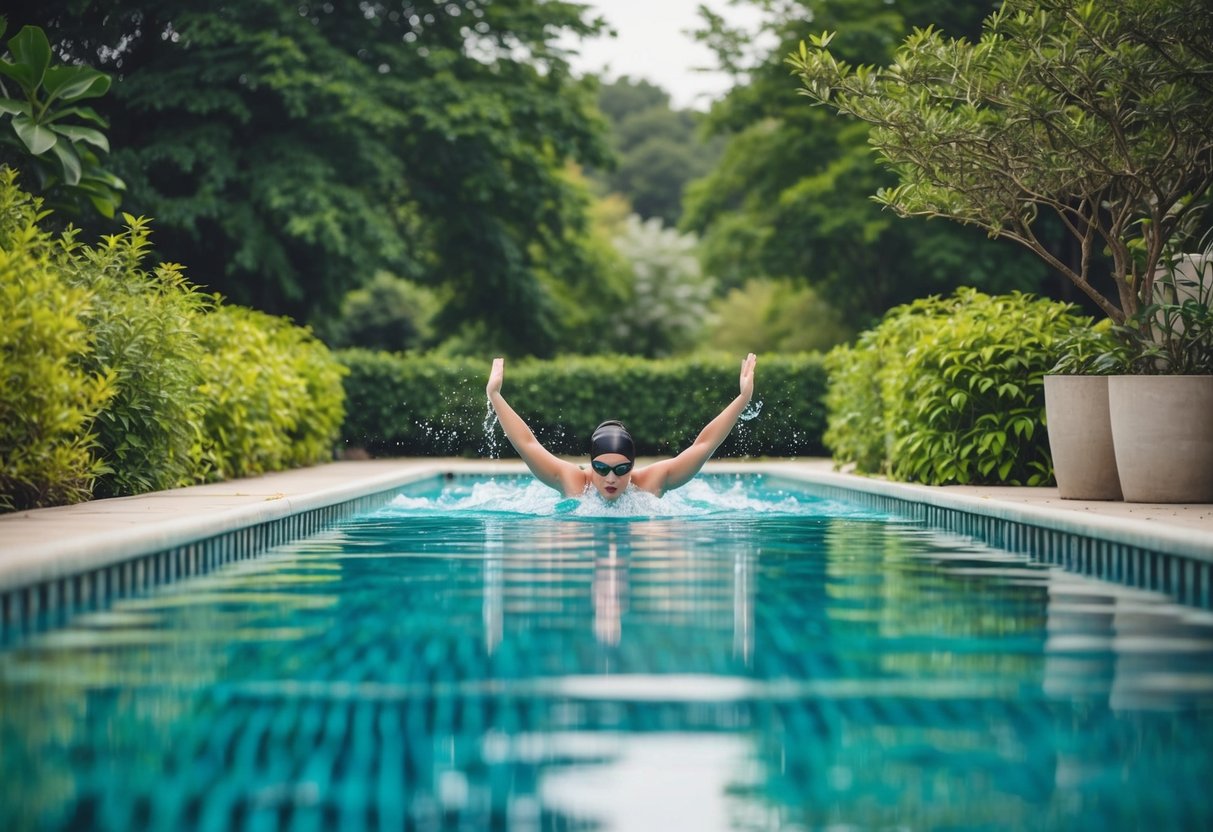
Integrating swimming into your injury recovery plan requires careful structuring and monitoring. A well-designed swimming rehabilitation programme provides the perfect balance of movement, resistance, and buoyancy to support healing.
Consultation with a Physical Therapist
Before diving into a swimming recovery plan, consulting with a qualified physical therapist is essential. These professionals can assess your specific injury and recommend appropriate swimming exercises.
Physical therapists often recommend swimming as a rehabilitation exercise because of its low-impact nature. They can create a customised swimming programme that targets your specific needs while avoiding movements that might aggravate your injury.
Your therapist might suggest:
- Specific strokes that support your rehabilitation goals
- Appropriate intensity levels based on your injury stage
- Assistive devices like pull buoys or kickboards
- Duration and frequency recommendations
Always obtain proper clearance from your healthcare provider before beginning any recovery swimming programme, especially for serious injuries.
Incorporating Rest Days and Active Recovery
Balance is crucial in any recovery plan. Swimming offers excellent opportunities for both challenging workouts and gentle active recovery sessions.
On harder training days, focus on controlled resistance work that promotes increased blood flow to sore muscles. This might include moderate-intensity lap swimming or targeted exercises.
For active recovery days, consider:
- Gentle water walking or jogging
- Light swimming with focus on technique rather than speed
- Water-based stretching routines
- Float therapy for complete relaxation
Rest days are equally important—they allow your body to repair and adapt. A typical schedule might include 2-3 swimming sessions per week with adequate rest between them.
Remember that recovery isn’t just about exercise; proper nutrition and restful sleep complement your swimming programme.
Monitoring Progress and Listening to Your Body
Successful rehabilitation requires attentive self-monitoring. Keep track of your swimming sessions and how your body responds to them.
Some effective monitoring strategies include:
- Maintaining a workout journal documenting exercises, duration, and pain levels
- Taking regular progress photos if applicable
- Rating perceived exertion during swimming (scale of 1-10)
- Noting changes in range of motion or strength
Fatigue, increased pain, or swelling are signals to reduce intensity. Swimming can speed up recovery time, but only when performed within appropriate limits.
Celebrate small improvements—recovery is rarely linear. A slight increase in distance or reduced discomfort represents meaningful progress in your healing journey.
Use of Protein Shakes or Supplements to Aid Recovery
Nutrition plays a vital role in muscle repair alongside your swimming rehabilitation programme. Protein intake is particularly important for rebuilding damaged tissues.
Protein shakes can provide convenient nutrition after swimming sessions when your muscles are most receptive to nutrients. Aim to consume protein within 30-45 minutes post-exercise for optimal benefit.
Other potentially beneficial supplements include:
- Omega-3 fatty acids for inflammation reduction
- Magnesium for muscle relaxation
- Vitamin D to support bone health
- Collagen peptides for joint and connective tissue
Always consult with a nutritionist or doctor before adding supplements, as requirements vary based on:
- Your specific injury
- Overall health status
- Age and activity level
- Existing medications
Remember that supplements complement, rather than replace, a balanced diet. Prioritise whole food sources of nutrients whenever possible for your recovery journey.
Lifestyle Factors Affecting Recovery

Your daily habits have a significant impact on muscle recovery, especially when combined with swimming. Sleep quality and managing chronic conditions can make a huge difference in how quickly your body heals.
Importance of Restful Sleep
Sleep is when your body does most of its repair work. During deep sleep, your muscles receive increased blood flow, delivering nutrients needed for healing damaged tissues.
Athletes who get 7-9 hours of quality sleep experience lower inflammation levels and faster recovery times. Poor sleep, on the other hand, can delay healing by up to 60%.
Try these sleep strategies to improve muscle recovery:
- Keep a consistent sleep schedule
- Avoid caffeine 6 hours before bedtime
- Create a cool, dark sleeping environment
- Limit screen time before bed
Swimming earlier in the day, rather than just before bed, may help improve sleep quality as it raises body temperature and then allows it to drop naturally.
Swimming in Relation to Chronic Conditions
Swimming provides unique benefits for those with chronic conditions who need gentle yet effective exercise for recovery.
People with arthritis benefit from swimming’s low-impact nature, which reduces joint stress whilst improving mobility. The water’s buoyancy supports joints, allowing movement with minimal pain.
For those with diabetes, regular swimming helps maintain healthy blood glucose levels, which supports optimal muscle recovery. Swimming improves insulin sensitivity, making nutrients more available to healing tissues.
Heart disease patients find swimming particularly valuable as it promotes circulation without straining the cardiovascular system. The improved blood flow swimming creates helps deliver oxygen and nutrients to damaged muscles whilst removing waste products.
The controlled breathing required in swimming can also reduce stress, further benefiting those with chronic conditions by lowering cortisol levels that might otherwise interfere with healing.
Safety Precautions and Injury Prevention
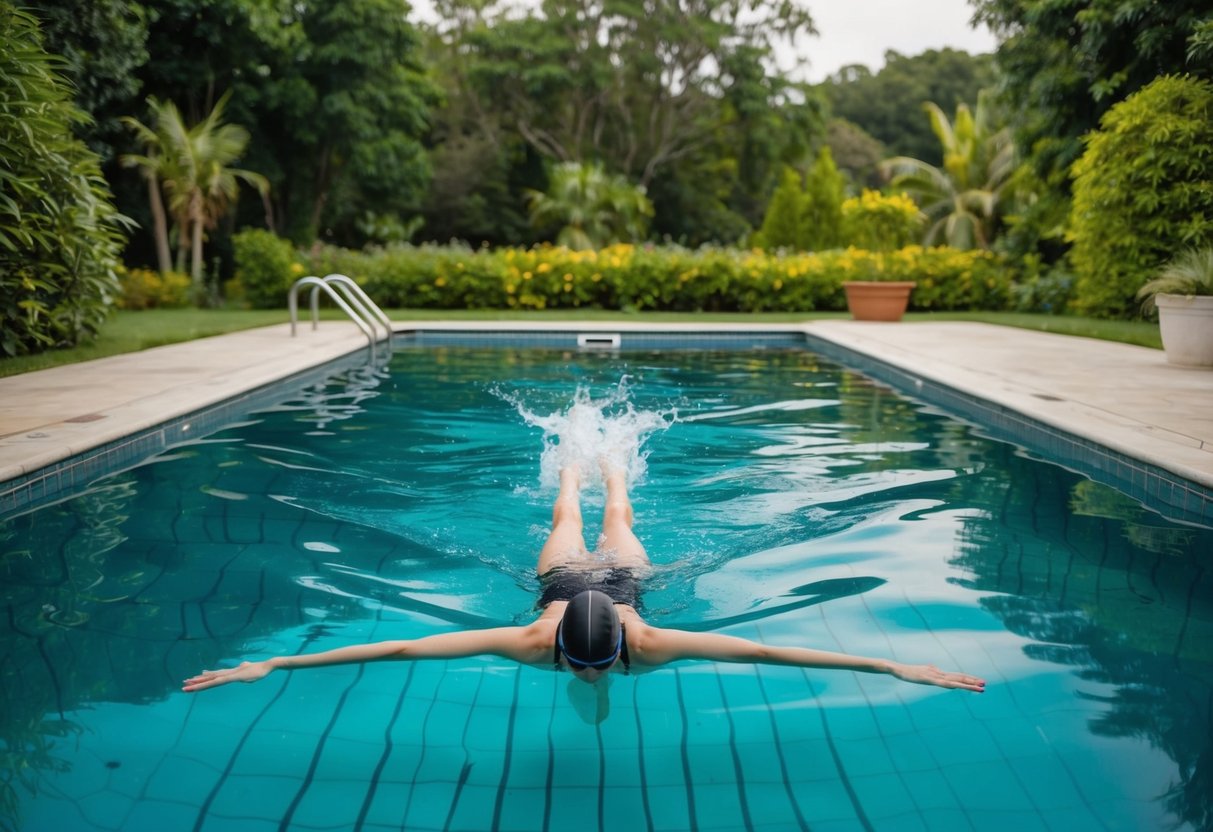
When using swimming as a rehabilitation method, proper safety measures are essential to prevent further injury and maximise the benefits of aquatic therapy. The right approach can make all the difference in your recovery journey.
Guidelines for Safe Swimming Practices
Before beginning any swimming programme for injury recovery, consult with a healthcare professional to ensure the activity is appropriate for your specific condition. Always start with a proper warm-up to prepare your muscles and reduce injury risk.
Warming up before swimming helps stretch muscles, improve blood flow, and significantly decrease the chance of aggravating existing injuries. This might include gentle pool walking or light stretching in shallow water.
Monitor your body’s response during swimming sessions. If pain increases, stop immediately. Pain is a warning sign that should never be ignored during rehabilitation.
Consider using supportive equipment like pull buoys, kickboards, or flotation belts to maintain proper form and reduce strain on injured areas whilst still getting a good workout.
Using Pool and Spa Facilities Responsibly
Choose appropriate swimming environments for your rehabilitation needs. Therapy pools with warmer temperatures (29-33°C) are ideal for injury recovery as they help relax muscles and increase blood flow to injured tissues.
Public pools should have clear water and proper chemical balance. If you notice cloudy water or strong chemical smells, find another facility as these conditions may indicate improper maintenance.
When using spa facilities, limit sessions to 15-20 minutes to prevent overheating and dehydration. Though relaxing, prolonged exposure can sometimes worsen inflammation in certain injuries.
Always follow pool rules and staff guidance. Designated slow lanes are best for rehabilitation swimming to avoid collision with faster swimmers. Exercising in uncrowded areas of the pool provides the space needed for controlled movements and proper technique.
Frequently Asked Questions
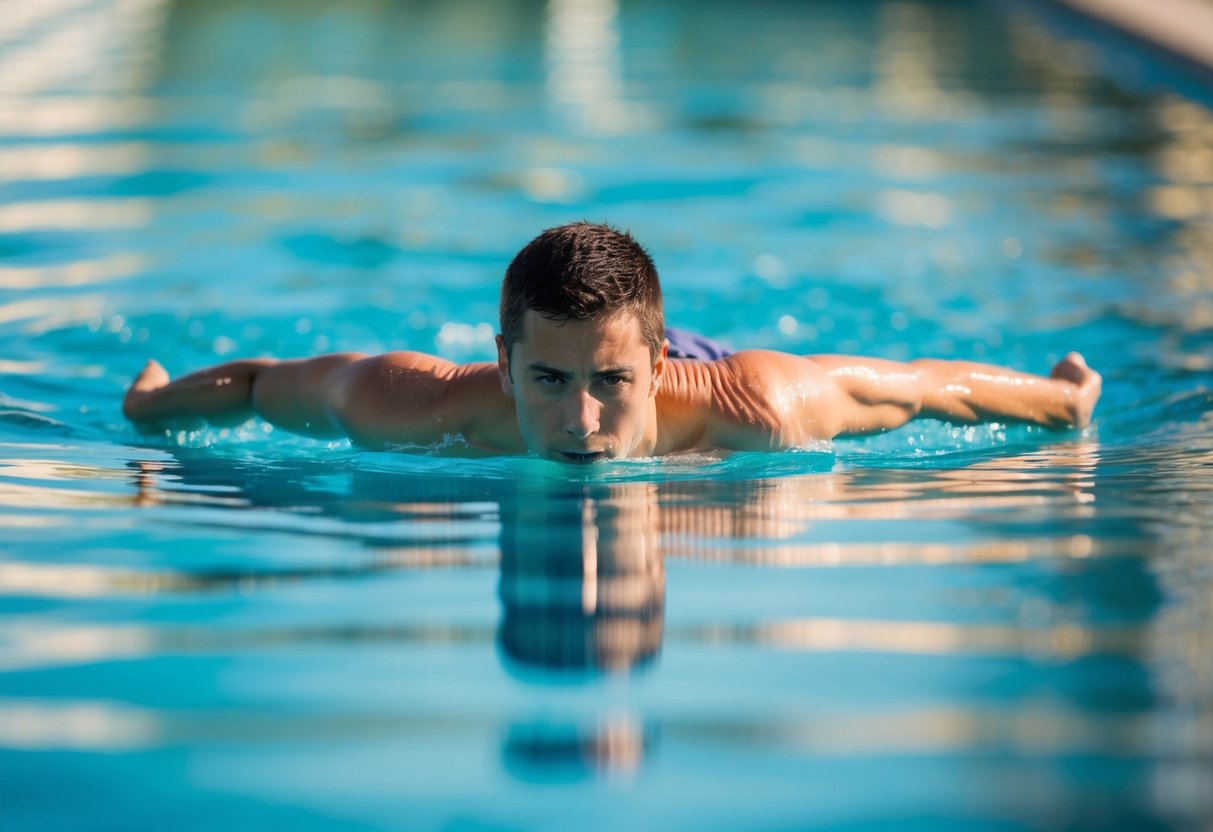
Swimming provides numerous therapeutic benefits for muscle recovery and rehabilitation. The water’s unique properties create an ideal environment for healing while maintaining fitness levels.
Can swimming assist in the rehabilitation of muscle injuries?
Yes, swimming is an excellent rehabilitation exercise for muscle injuries. The buoyancy of water reduces pressure on joints, allowing for movement with minimal strain on damaged tissues.
This low-impact environment enables injured individuals to maintain fitness while healing. The water supports body weight, making exercises possible that might be painful on land.
When recovering from muscle injuries, starting with gentle strokes and gradually increasing intensity can promote healing without risking further damage.
What benefits does swimming offer for post-workout recovery?
Swimming promotes circulation to fatigued muscles, helping to flush out metabolic waste products that accumulate during intense exercise.
The alternating strokes keep muscles loose and flexible, preventing stiffness that often follows hard training sessions. This active recovery process can reduce delayed onset muscle soreness.
The gentle resistance of water also provides a form of compression that can help reduce inflammation without placing stress on recovering tissues.
Is it advisable to swim when experiencing sore muscles?
Swimming can be beneficial when experiencing muscle soreness. The water’s natural resistance provides gentle massage-like effects that can ease discomfort.
Light swimming increases blood flow to sore areas without the jarring impact of land-based exercises. This improved circulation helps deliver nutrients necessary for repair.
It’s important to keep intensity low and focus on technique rather than speed when swimming with sore muscles.
How does swimming contribute to muscle growth and strength?
Water provides consistent resistance in all directions, creating a balanced environment for strengthening muscles throughout the body.
Unlike weight training that typically works muscles in isolation, swimming engages multiple muscle groups simultaneously, promoting functional strength and coordination.
Regular swimming can increase lean muscle mass while improving endurance, particularly when incorporating varied strokes and interval training.
In what ways can swimming support runners in their recovery process?
Swimming offers runners a chance to maintain cardiovascular fitness while giving high-impact joints and muscles a break from running stresses.
The horizontal body position during swimming helps counteract the vertical compression runners typically experience, providing balance to training routines.
Water workouts can address muscle imbalances common in runners by strengthening underdeveloped upper body muscles that complement running performance.
Are there any advantages to incorporating swimming into a recovery day routine?
Swimming on recovery days maintains activity levels without hindering the body’s repair processes. The gentle nature of swimming makes it ideal for active recovery.
Research indicates that active recovery like swimming can be more effective than complete rest for reducing soreness and improving subsequent performance.
Swimming also offers mental health benefits, with the rhythmic nature of strokes and breathing promoting relaxation and reducing stress hormones that can impede recovery.

